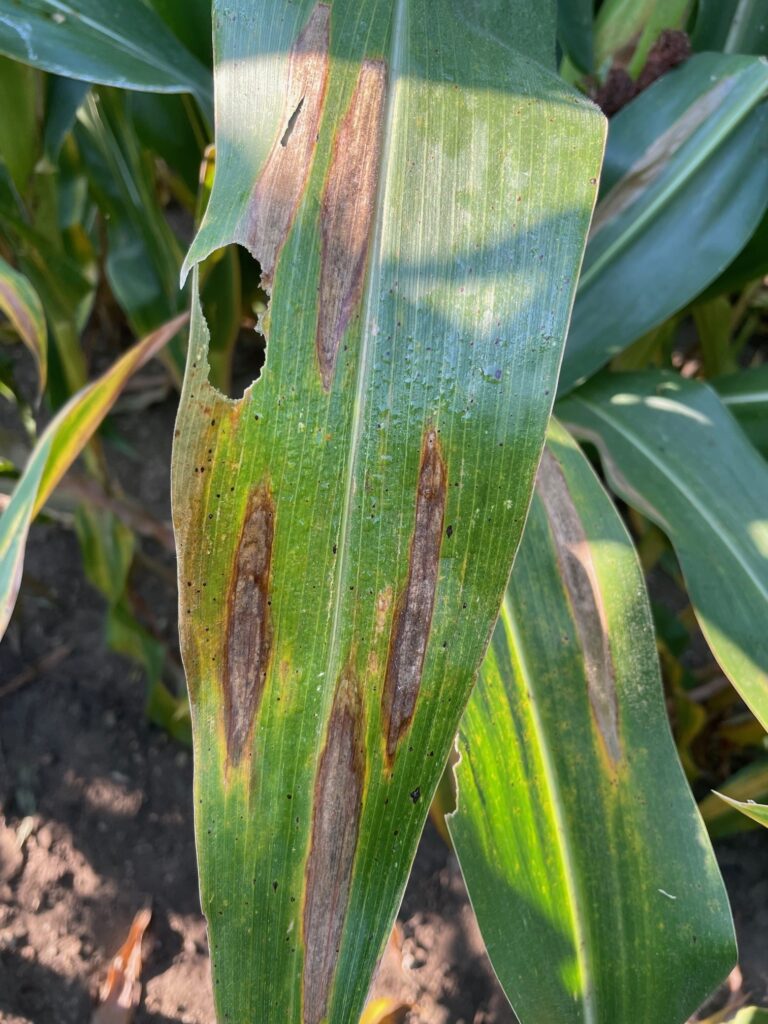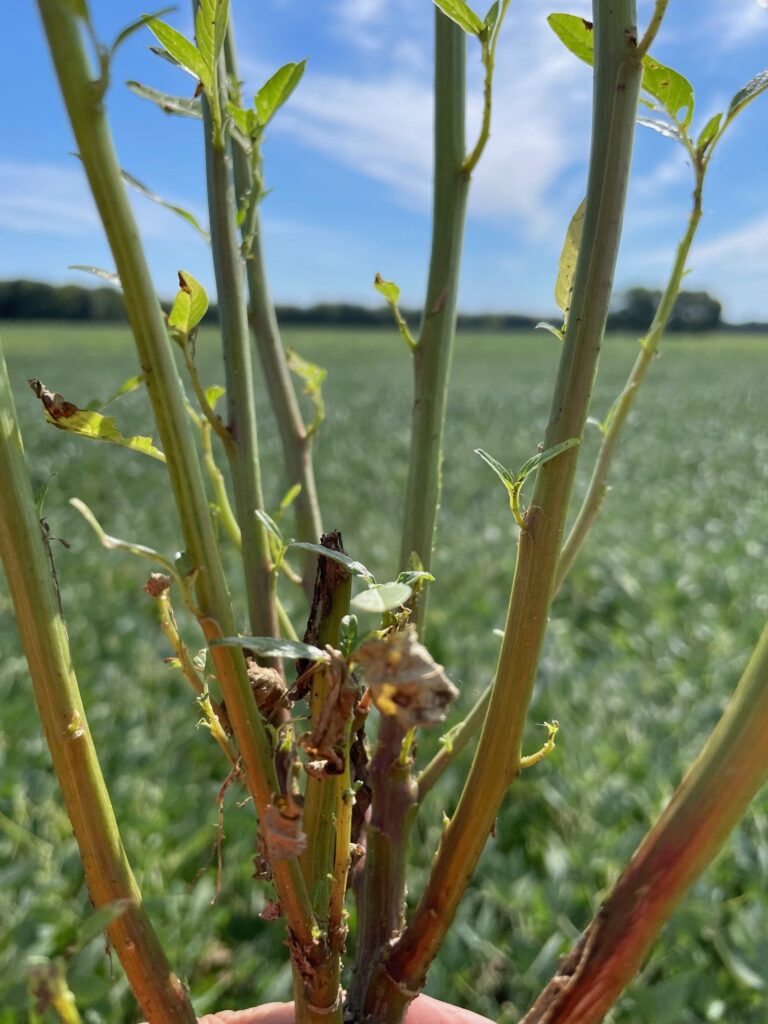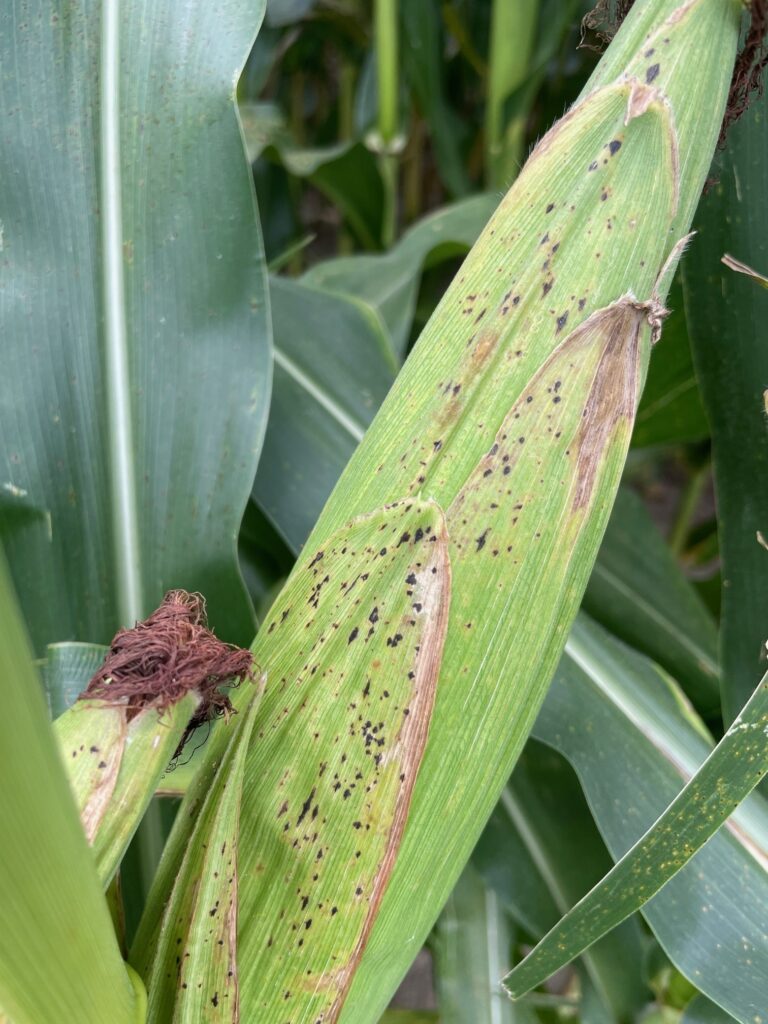
Russ Higgins
IL Extension
rahiggin@illinois.edu

Russ Higgins
IL Extension
rahiggin@illinois.edu
RUSS HIGGINS UPDATES



Rain is in the forecast which would greatly benefit the soy crop in drier areas of Northeast Illinois, that crop is still at R5 or beginning seed. As we reach mid R5 we can expect the remobilization of nutrients from leaves and stems to start. While few reports of soy disease have been noted to date, a report of White Mold in Kane County was shared this week. Most corn fields visited are now at some stage of R5 or dent stage. In lighter soils lacking rain, significant firing is evident. As our crops near maturity many farmers have turned their attention to readying combines and other harvest equipment. While important, we can also find value in late season scouting visits. This week has been a very interesting in corn leaf diseases, Tar Spot continues to infect and spread within and across fields. This is the time to evaluate fungicide application efficacy or hybrids inherent or bred tolerance to Tar Spot and other diseases. In addition to Tar Spot, symptoms of Northern Corn Leaf Blight, Gray Leaf Spot and Southern Rust can be found in area corn fields. Visiting fields with disappointing weed control can also provide insight into management decisions in future years. Included is an image of Waterhemp treated with a tank mix of Enlist and Liberty that killed the apical meristem but not the plant. In visiting Dr. Aaron Hager, Weed Specialist at the University of Illinois, he shared the current message for Waterhemp control in soy. I had to chuckle (and could relate) at recommendation 7.
1) Use glufosinate with Enlist One instead of glyphosate. If we miss grass with the tankmix, we can always come back and clean it up with glyphosate. We do NOT want to miss the waterhemp with the first application.
2) Keep the water volume close to 20 gpa whenever possible.
3) Be sure to use the correct spray tips; these drift reduction nozzles are terrible for contact herbicides, such as glufosinate.
4) Spray small waterhemp. If the field average size is 4 inches, the reality is a field with plants ranging from 8 inches to ½ inch.
5) Keep the AMS at the label recommended rate. This is NOT the place to cut costs.
6) Glufosinate likes bright sunshine, high air temperatures, and high humidity. Applications made when one or more of these are missing often are somewhat compromised.
7) Spray glufosinate like you once sprayed Basagran (that one resonates only with those with at least a touch of gray hair).


 and then
and then